$5 National Bank Notes
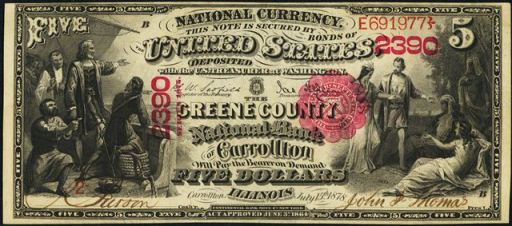
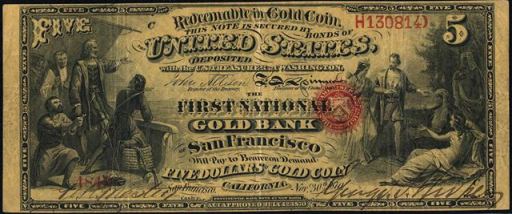
A different variety of the first charter issue is the five dollar national gold bank note pictured above. These were only issued for banks in California. Expect your five dollar national gold bank note to be in circulated condition. High grade examples are extremely rare.
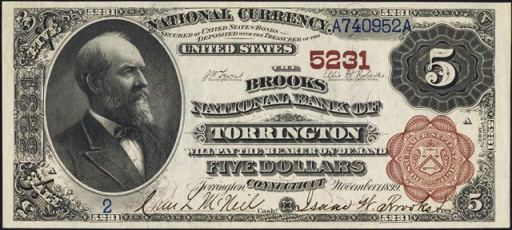
One of the most popular five dollar national bank notes is called an 1882 brown back. These notes are easy to spot because they have a rounded brown seal and the back of each note is brown; it also has the charter number of the bill printed prominently. The five dollar denomination is by far the most desired of this series. It comes with all kinds of different layouts. These issues can be from tiny towns or from large metropolitan cities. James Garfield is pictured on the left hand side of the bill.
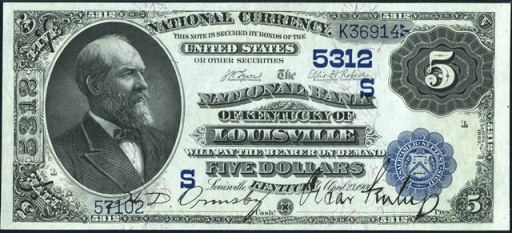
The least popular five dollar national bank note is known as the 1882 date back. These are fairly common and don’t have a whole lot of eye appeal. The date “1882 – 1908” is printed on the reverse of each note. Despite saying series of 1882, these were actually printed between 1908 and 1916. These are the red-headed step child for the five dollar denomination.
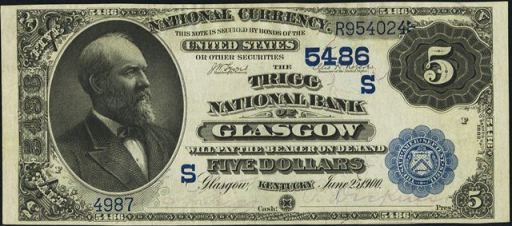
The series of 1882 value back looks similar to a date back; however, the value back has the phrase “five dollars” printed largely in the back center of each bill. Value backs aren’t especially popular, but they can be rare. In order for a bank to issue value backs, the bank had to have been opened between 1896 and 1901, and still be in business by 1916. Less than 400 banks qualified to issue five dollar value backs.
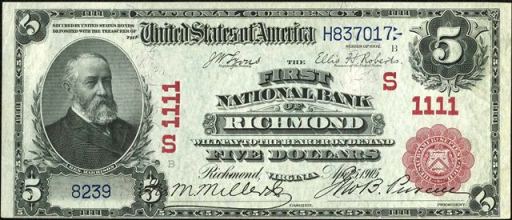
In my opinion the most interesting and eye appealing five dollar national bank note is the series of 1902 red seal as seen above. The note pictured is from Richmond. However, many red seal notes come from small towns and interestingly named locales. Red seals were only printed between 1902 and 1908. They usually represent a rare issue for most banks and towns. Ben Harrison is printed on the left hand side of the bill.
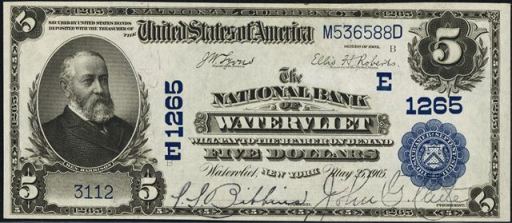
1902 blue seals were printed after red seals. Blue seals were printed from 1908 until 1929. Generally speaking, blue seals are more common than red seals. However, there are still thousands of extremely rare blue seals. If the serial number below Ben Harrison on your five dollar note is above 10,000 then you note is probably common.
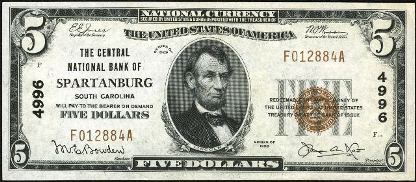
The 1929 five dollar national bank note is the only “small-sized” variety issued for the national currency series. Despite saying series of 1929, these were actually printed from 1929 up until 1935, when the national currency era ended. These issues with Abraham Lincoln tend to be common, but some can be rare. The note pictured above is from Spartanburg, but your bill could be from just about any bank and town.
If you have some questions about the value of your five dollar national bank note, then send me an email and ask. I am always an interested buyer. Sales@AntiqueMoney.com


